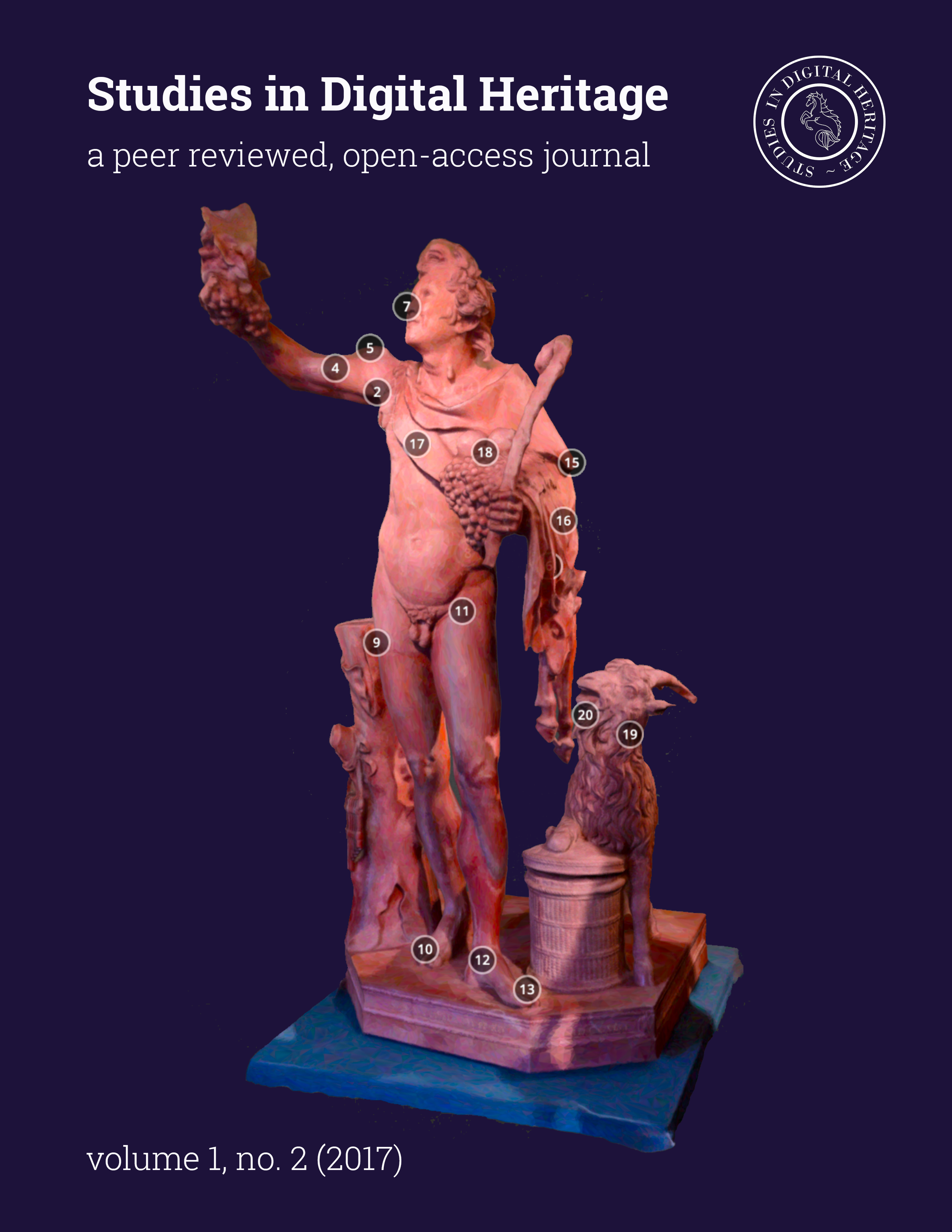Digital Method for Verifying Archaeological Hypotheses. Medieval Gord Under Pułtusk Castle
Main Article Content
Abstract
This paper describes the process of collaboration between architects and archaeologists started in 2012 on the virtual reconstruction of the medieval proto-urban site in Pultusk, Poland. The result was digital reconstruction of urban structure based on parametric methods supported by 3D printing. The paper summarizes the process consisting of organizing analog data, digitizing it, enriching with experts’ knowledge and creating procedural model of the settlement. The whole process ended with not only digital and physical, 3D printed model, but also a set of conclusions confirming usefulness of such methods in scientific research concerning interpretation of archaeological relicts in situation, when not all information is available and clear. Both archaeological practice and the process of architectural reconstruction confirm that reliability of scientific research and the regime of logical reasoning are independent from used technology, however they may be effectively supported by new methods and tools.
Downloads
Article Details
From 18 May 2018, the contents of Studies in Digital Heritage are licensed under a Creative Commons Attribution-NonCommercial 4.0 International License (CC BY-NC 4.0). Our submitting authors pay no fee and retain the copyright to their own work.
How this works: to submit their work to the journal, authors grant Studies in Digital Heritage a nonexclusive license to distribute the work according to a CC BY-NC 4.0 license. Once an article is published, anyone is free to share and adapt its contents—provided only that they do so for noncommercial purposes and properly attribute the shared or adapted information. Details of these terms can be found on the Creative Commons website.
Download SDH’s full author agreement here
Studies in Digital Heritage will insert the following note at the end of any work published in the journal:
© [Year] by the authors. This article is an open-access article distributed under the terms and conditions of the Creative Commons Attribution License CC BY-NC 4.0 (https://creativecommons.org/licenses/by-nc/4.0/).
References
Patricia Alkhoven. 1997. Computer Visualisation as a Tool in Architectural Historical Research: Representation and Research of the Historical Urban Environment. Archit. Urban Simul. Tech. Res. Educ. (1997), 23–27.
Patricia Alkhoven. 1991. The Reconstruction of the Past : the Application of New Techniques for Visualisation and Research in Architectural History. Archit. Hist. (1991), 549–566.
Maria Brykowska. 2003. Metody pomiarów i badań zabytków architektury, Warszawa: Oficyna Wydawnicza Politechniki Warszawskiej.
Gary Ennis and Tom Maver. 2001. Welcoming multiple visitors to the Virtual City. In Hannu Penttilä, ed. Architectural Information Management: 19th eCAADe Conference Proceedings. Helsinki: Helsinki University of Technology (HUT)/Department of Architecture, 423–429.
A. Gołembnik, D. Makowski, and M. Mierosławski. 1997. Badania na wzgórzu zamkowym w Pułtusku w latach 1976– 1984. In A. Gieysztor, ed. Pułtusk. Studia i materiały z dziejów miasta i rzemiosła, t. III. Pułtusk.
Simon Haegler, Pascal Müller, and Luc Van Gool. 2009. Procedural Modeling for Digital Cultural Heritage. EURASIP J. Image Video Process. 2009, January 2009 (2009), 1–11. DOI:https://doi.org/10.1155/2009/852392
Edward Harris. 1989. Principles of Archaeological Stratigraphy. Bermuda Marit. Museum 142 (1989), 1001. DOI:https://doi.org/10.1007/s007690000247
Jeffrey Jacobson and Jane Vadnal. 2005. The virtual Pompeii project. Proc. World Conf. E-Learning (2005).
P. Müller, T. Vereenooghe, a Ulmer, and L. Van Gool. 2005. Automatic reconstruction of Roman housing architecture. Rec. Model. Vis. Cult. Herit. (2005), 287–298.
Jerzy Piekalski. 1998. Uwagi o problemie definicji miasta średniowiecznego. In Zofia Kurnatowska, Hanna Kóčka-Krenz, & Władysław Łosiński, eds. Kraje słowiańskie w wiekach średnich : profanum i sacrum. Poznań: Wyd-wo Poznańskiego Towarzystwa Przyjaciół Nauk, 349–357.
Daniel Pletinckx and Premio Tartessos. 2011. Virtual Archaeology as an Integrated Preservation Method. Virtual Archaeol. Rev. 2 (2011), 33–37. DOI:https://doi.org/http://dx.doi.org/10.4995/var.2011.4545
Paul Reilly. 1991. Towards a Virtual Archaeology. CAA90. Comput. Appl. Quant. Methods Archaeol. 1990 (1991), 132–139.
Fabio Remondino and Sabry El-hakim. 2006. Image-based 3D modelling: A review. Photogramm. Rec. 21, 115 (2006), 269–291. DOI:https://doi.org/10.1111/j.1477-9730.2006.00383.x
Jeroen De Reu et al. 2013. Towards a three-dimensional cost-effective registration of the archaeological heritage. J. Archaeol. Sci. 40, 2 (2013), 1108–1121. DOI:https://doi.org/10.1016/j.jas.2012.08.040
Marie Saldan. 2015. An Integrated Approach to the Procedural Modeling of Ancient Cities and Buildings. 30, June (2015). DOI:https://doi.org/10.1093/llc/fqv013
Jan Słyk and Stefan Wrona. 2015. Informacyjne środowisko rekonstrukcji - przedlokacyjna struktura osadnicza w Pułtusku w XIII-XIV wieku, Warszawa: Oficyna Wydawnicza Politechniki Warszawskiej.
G. Stiny and W.J. Mitchell. 1978. The Palladian grammar.
George Stiny and James Gips. 1972. Shape grammars and the generative specification of painting and sculpture. Inf. Process. 71 Proc. IFIP Congr. 1971. Vol. 2 71 (1972), 1460–1465. DOI:https://doi.org/citeulike-article-id:1526281


